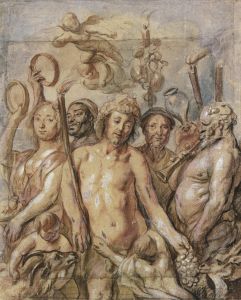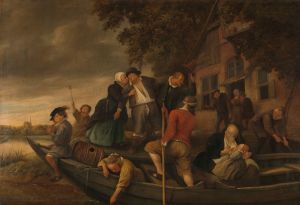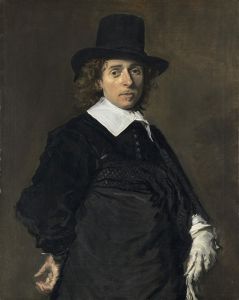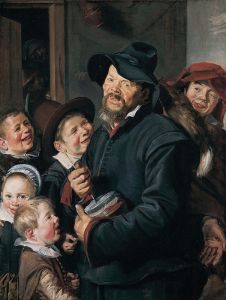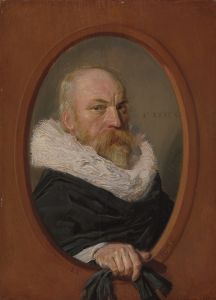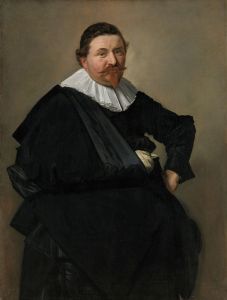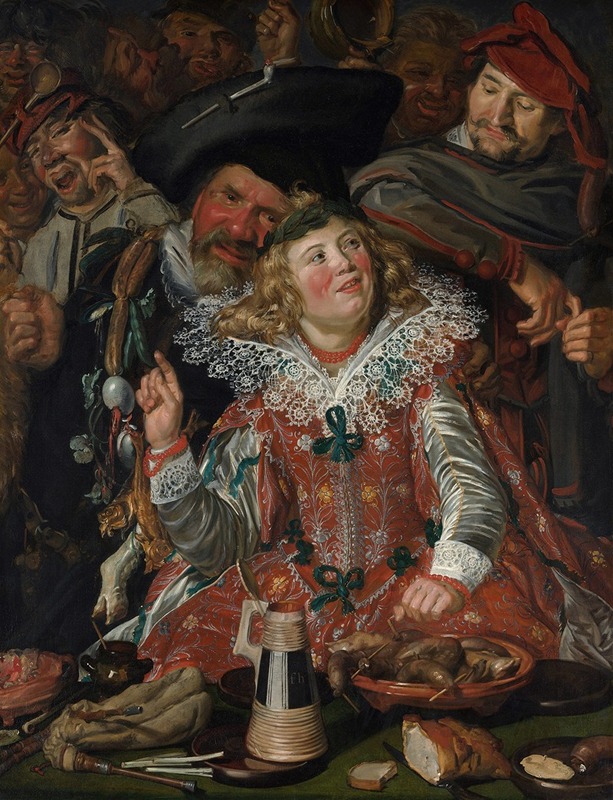
Merrymakers at Shrovetide
A hand-painted replica of Frans Hals’s masterpiece Merrymakers at Shrovetide, meticulously crafted by professional artists to capture the true essence of the original. Each piece is created with museum-quality canvas and rare mineral pigments, carefully painted by experienced artists with delicate brushstrokes and rich, layered colors to perfectly recreate the texture of the original artwork. Unlike machine-printed reproductions, this hand-painted version brings the painting to life, infused with the artist’s emotions and skill in every stroke. Whether for personal collection or home decoration, it instantly elevates the artistic atmosphere of any space.
Frans Hals, a prominent Dutch Golden Age painter, is renowned for his lively and dynamic portraiture. One of his notable works is "Merrymakers at Shrovetide," an oil painting that exemplifies his skill in capturing the vivacity and spirit of his subjects. Created around 1616-1617, this painting is housed in the Metropolitan Museum of Art in New York City.
"Merrymakers at Shrovetide" depicts a scene of revelry associated with Shrovetide, a festival preceding Lent. The painting features three figures, each characterized by their expressive faces and animated gestures. The central figure is a man dressed in a jester's costume, complete with a cap adorned with bells. He holds a musical instrument, possibly a lute, suggesting his role as an entertainer. To his left is a woman, her head thrown back in laughter, and to his right is another man, who appears to be singing or shouting, adding to the sense of merriment.
Hals's technique in this painting is notable for its loose brushwork and vibrant use of color, which contribute to the sense of movement and spontaneity. The artist's ability to convey the texture of fabrics and the play of light on the figures' faces is evident, showcasing his mastery of portraiture. The composition is tightly framed, drawing the viewer's attention directly to the interaction between the figures, which is central to the painting's narrative.
The theme of Shrovetide, a time of feasting and celebration before the austerity of Lent, is reflected in the jovial expressions and lively poses of the figures. This subject matter was popular in the Netherlands during the 17th century, as it provided an opportunity to explore themes of indulgence and the human condition. Hals's depiction of this festive scene aligns with the broader cultural context of the period, where such celebrations were common and often depicted in art.
Frans Hals was known for his ability to capture the essence of his subjects with immediacy and vitality. "Merrymakers at Shrovetide" is a testament to his skill in rendering human emotion and interaction. The painting not only serves as a representation of a specific cultural event but also as an example of Hals's innovative approach to portraiture, which influenced subsequent generations of artists.
The painting's provenance includes its acquisition by the Metropolitan Museum of Art, where it remains an important part of their collection. It continues to be studied and appreciated for its artistic merit and historical significance. Through "Merrymakers at Shrovetide," viewers gain insight into the social customs of the Dutch Golden Age and the enduring appeal of Hals's work.





